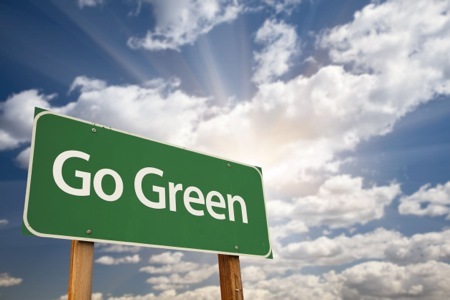

|
Chris Shaw
Editor |
6 surprising toxins in everyday cleaning products
19 July 2016
With a recent shift towards the use of green cleaning products, many professional businesses in the cleaning sector are unaware that a growing number of customers expect them to use environmentally friendly and sustainable products. Traditional cleaning products contain an average of almost sixty-two toxic chemicals each. Green cleaning products do not contain the harmful chemicals which worry customers and clean just as effectively as their traditional counterparts.

While some cleaning companies are adopting a greener approach when it comes to their services, many are still unaware of this major shift in the industry. We’ve compiled six surprising toxins that professional cleaning companies are likely to find in the products they use:
Phthalates
This toxin is largely found in household products that are fragranced. Because companies don’t have to reveal what’s in their scent, you probably won’t find phthalates listed under the ingredients. If you see the word “fragrance” on the product label, chances are that there are phthalates present. Phthalates are known as endocrine disruptors and can affect men through inhalation or skin contact. They can also cause migraines and asthma. Professional cleaning services who usually use air fresheners to make a client’s home or workspace smelling nice can instead use organic tree oil based fragrance sprays or essential oils.
Perchloroethylene
Clients who send off their clothes to a dry-cleaning service or have professional carpet/upholstery cleaning done are likely to encounter perchloroethylene (perc), a neurotoxin-chemical. Found in spot cleaners and used mainly by dry cleaners, perc is known for causing dizziness, loss of coordination and other symptoms associated with the brain. Individuals normally are exposed to perc through inhalation, often through the smell of freshly dry-cleaned clothes or the fumes that remain in the air after cleaning carpets. Instead, dry cleaner services should start using liquid carbon dioxide (CO2) as an alternative to toxic dry-cleaning solvents. Upholstery cleaners can use natural ingredients such as undiluted castile soap for spot cleaning.
Triclosan
When housekeeping services use anything labelled as “antibacterial”, chances are it has triclosan in it. Triclosan is a toxin known for promoting the growth of drug-resistant bacteria that may also develop resistance to household bacteria. But continuous use of this toxin can actually develop resistance towards real antibiotics that humans may need from time to time. A study by The American Medical Association also indicated that there is no evidence these antimicrobials make individuals healthier or safer. Instead, professional cleaners should try using products that are not antibacterial, alcohol-based and those with short ingredient lists.
Quats
Another highly toxic chemical found in cleaning products with “antibacterial” labels are Quats. They pose the same threat as triclosan and are a type of antimicrobial. This means that they can irritate skin, create respiratory disorders, and develop asthma in individuals if used regularly. Instead, the green approach promotes the use of vinegar, as it’s considered a natural fabric softener, instead of dryer sheets. Also, using tea-tree oil (mixed with vinegar) makes a great all-purpose cleaner and can be used on multiple surfaces and general cleaning.
2-BUTOXYETHANOL
2-Butoxyethanol belongs to the ‘glycol ethers’ category and is found in many window cleaners. It is also found in kitchen cleaners and multipurpose cleaners and gives cleaning products a sweet smell. Since there are no laws that govern the products listing, companies are not required to list this ingredient on their label at all. When enclosed areas such as basements or bathrooms are cleaned with products that contain 2-butoxyethanol, individuals may experience dizziness, become nauseous and start experiencing slight headaches.
AMMONIA
On top of general cleaning, a lot of customers of housekeeping businesses request polishing services for silverware. Most polishing agents include ammonia, a highly toxic chemical that can especially affect elderly people with lung issues, and initiate breathing problems that may lead to asthma-like symptoms. It can also create a poisonous gas if mixed with bleach. Toothpaste is a great alternative to polish silver, and using a homemade (vinegar plus baking soda) formula for cleaning fixtures and windows is just as efficient.
For the cleaning sector, reducing exposure to toxins may not only be beneficial for their customers but also for their employees. By significantly reducing the use of harmful cleaning products, cleaning companies can promote a natural and greener way that sustains the environment and human health.
Written by Ankush Gupta, owner of cleaning agency, St. Anne’s Housekeeping
- Changing your cleaning provider: how to improve standards
- Create a more inviting business premises through professional pressure cleaning
- Task your cleaners with killing germs
- Preventing occupational lung disease
- How to raise hand hygiene standards
- Speaker blog: A whole new world... a whole new gig economy?
- How allergy sufferers can vacuum more easily
- What to consider when hiring an office cleaning company
- Things to consider when carrying out professional cleaning services
- Reasons to stick to green cleaning methods
- No related articles listed





















